Relieving Your Dog's Arthritis Pain
- Natural supplements, such as glucosamine, green-lipped mussel, and omega-3 fatty acids, can significantly reduce inflammation and support joint repair in dogs with arthritis.
- Simple home modifications such as non-slip flooring and orthopaedic beds can dramatically improve mobility and comfort for arthritic dogs.
- Weight management is the most powerful non-medicinal intervention, with even a 6-10% reduction in body weight showing marked improvement in joint pain and mobility.
- JPS Natural Pet Supplements offers specialised formulations with Boswellia and turmeric that target the root causes of joint inflammation rather than just masking symptoms.
- Dogs can develop arthritis as early as one year of age, with 20% showing signs of degenerative joint disease before they're even middle-aged.
Watching your dog struggle to rise in the morning or hesitate before climbing stairs breaks every pet parent's heart. Suppose your furry companion is showing signs of stiffness or discomfort; you're not alone. In that case, canine arthritis affects about 20% of dogs over one year of age, making it one of the most common chronic conditions veterinarians treat daily.
Understanding how to manage your dog's joint pain effectively can dramatically improve their quality of life. While conventional medications certainly have their place, a comprehensive approach that incorporates natural remedies, physical support, and environmental modifications often provides the most sustainable relief. JPS Natural Pet Supplements has pioneered anti-inflammatory formulations specifically designed to address the underlying causes of joint discomfort, rather than merely masking the symptoms.
Let's explore how to recognise arthritis symptoms early and implement a multi-faceted approach to keeping your four-legged friend comfortable, mobile, and happy for years to come.

5 Signs Your Dog is Suffering from Joint Pain
Arthritis develops gradually in dogs, often making it challenging to recognise until the condition has significantly progressed. Many pet owners mistakenly attribute their dog's slowing pace to normal ageing rather than a treatable condition. Learning to identify the subtle early warning signs can help you intervene before pain becomes debilitating.
Morning Stiffness and Difficulty Rising
One of the earliest and most notable signs of arthritis is stiffness that occurs after periods of rest. If your dog seems particularly slow to get up in the morning or after napping, their joints may be stiffening during inactivity. You might notice they need to stretch extensively before walking normally or that the first few steps appear uncomfortable. This stiffness typically improves after a few minutes of movement, as the joint fluid warms and circulates through the affected areas.
Limping or Favouring Certain Limbs
Intermittent or persistent limping is a clear indicator of joint discomfort. Your dog may favour one leg over another, particularly after exercise or play. The limping comes and goes initially, often worsening with cold weather or after intense activity. Pay close attention to which limbs are affected – front limb lameness usually indicates elbow or shoulder arthritis, while hind limb issues typically point to hip or knee problems.
Reluctance to Jump, Run or Climb Stairs
Dogs with developing arthritis often modify their behaviour to avoid painful movements long before they show obvious signs of discomfort. You may notice that your previously active dog hesitates before jumping into the car or onto furniture. Stair climbing can become particularly challenging as it requires weight-bearing on a flexed joint – a motion that puts significant pressure on damaged cartilage. Some dogs may refuse to participate in certain activities altogether or require encouragement to perform movements they once did eagerly.
Visible Joint Swelling and Warmth
Advanced arthritis can cause physical changes to the affected joints that can sometimes be detected through touch. Gently feeling your dog's joints may reveal swelling, especially around the knees, hips, elbows, or wrists. Arthritic joints often feel warmer than surrounding tissues due to inflammation. Compare the same joint on both sides of your dog's body to identify differences in size or temperature that might indicate a problem.
Irritability When Touched in Certain Areas
Dogs experiencing joint pain may become uncharacteristically sensitive when certain areas of their body are touched or manipulated. This protective response helps them avoid painful movements. You might notice your usually affectionate dog pulling away when you pet certain areas or even growling if you touch or move a painful joint. This behaviour change isn't aggression – it's a clear communication of discomfort that should prompt further investigation rather than disciplinary action.
Most Effective Prescription Medications for Dog Arthritis
When natural interventions aren't providing sufficient relief, prescription medications can play a valuable role in your dog's arthritis management plan. These pharmaceuticals are most effective when used as part of a comprehensive approach rather than as standalone solutions. Always work closely with your veterinarian to find the proper medication protocol while continuing supportive natural therapies.
NSAIDs Specifically Formulated for Dogs
Veterinary non-steroidal anti-inflammatory drugs (NSAIDs) represent the frontline pharmaceutical treatment for canine arthritis. Unlike some human NSAIDs, such as Ibuprofen, which can be toxic to dogs, medications like Carprofen (Rimadyl), Meloxicam (Metacam), and Deracoxib (Deramaxx) are specifically formulated for canine physiology. These medications work by inhibiting specific enzymes that trigger inflammation, effectively reducing pain and swelling in affected joints. Your veterinarian will recommend regular blood work to monitor liver and kidney function while your dog is on these medications, especially during long-term use.
When to Consider Pain Medications Beyond NSAIDs
For dogs with severe arthritis or those who cannot tolerate NSAIDs, additional pain management options may be necessary. Gabapentin can help control neuropathic pain that often accompanies chronic arthritis, while tramadol provides moderate pain relief through different pathways than NSAIDs. In particularly challenging cases, veterinarians might prescribe amantadine to address the "wind-up" phenomenon, where the nervous system becomes increasingly sensitive to pain signals. These medications often work synergistically with anti-inflammatories, allowing for lower doses of each while providing superior pain control.
Injectable Joint Therapies: Adequan and PRP
Polysulfated glycosaminoglycan (Adequan) injections represent one of the most effective interventions for canine arthritis, working beyond pain relief, actually to modify disease progression. Unlike pain medications that mask symptoms, Adequan helps protect remaining cartilage and stimulates the production of joint fluid, addressing the underlying disease process. Many dogs receive an initial series of injections (typically twice weekly for four weeks) followed by maintenance injections as needed. Platelet-rich plasma (PRP) therapy, although relatively new in veterinary medicine, has shown promising results by harnessing the healing properties of a dog's own blood components to stimulate tissue repair and reduce inflammation in damaged joints.
5 Natural Supplements That Actually Work for Joint Pain
Natural supplements form the foundation of long-term arthritis management, providing gentle yet effective support for joint health with minimal side effects. Unlike medications that primarily address symptoms, these supplements work at the cellular level to nourish joint tissues, reduce inflammation, and support the body's natural healing processes. The most effective approach typically combines several complementary supplements tailored to your dog's specific needs.
1. Glucosamine and Chondroitin: The Building Blocks for Joint Repair
Glucosamine and chondroitin sulphate remain the cornerstone of joint supplementation, providing essential building blocks for cartilage repair and maintenance. Glucosamine stimulates the production of glycosaminoglycans and proteoglycans, critical components of cartilage structure, while chondroitin helps attract and maintain fluid within the cartilage, improving shock absorption and nutrient delivery. Research shows that these supplements are most effective when used preventatively or in the early stages of arthritis. Studies have demonstrated improved mobility and reduced pain when administered at therapeutic doses (typically 20-30mg/lb of glucosamine daily). While results aren't immediate, most dogs show noticeable improvement after 4-6 weeks of consistent supplementation.
2. Omega-3 Fatty Acids: Nature's Anti-Inflammatory
Omega-3 fatty acids, particularly EPA and DHA derived from marine sources, provide powerful anti-inflammatory effects throughout the body. These essential fats work by reducing the production of inflammatory cytokines and eicosanoids that drive joint inflammation and pain. High-quality fish oil supplements can significantly reduce the need for pharmaceutical pain relievers, with studies showing improved weight-bearing and activity levels in arthritic dogs receiving therapeutic doses. For optimal results, look for supplements that provide 50-100mg of combined EPA/DHA per kilogram of body weight daily. Remember that quality matters tremendously with fish oil supplements.
3. Green-Lipped Mussel: Powerful Joint Support from the Sea
Green-lipped mussel (Perna canaliculus) extract offers a comprehensive approach to joint health, containing a unique profile of omega-3 fatty acids, glycosaminoglycans, and natural compounds that target multiple aspects of arthritis. This New Zealand shellfish provides ETA (eicosatetraenoic acid), a rare omega-3 that inhibits the inflammatory enzyme LOX more effectively than traditional fish oils. Clinical studies demonstrate that green-lipped mussel extract significantly improves joint comfort and mobility in dogs, with effects typically becoming noticeable within 2-4 weeks. The comprehensive action makes it particularly valuable for dogs with inflammatory arthritis conditions that haven't responded adequately to simpler supplements.
4. Turmeric and Boswellia: Ancient Anti-inflammatories with Modern Proof
Herbal anti-inflammatories, such as turmeric (containing curcumin) and Boswellia serrata, offer powerful natural alternatives to pharmaceutical interventions. Curcumin, the active compound in turmeric, inhibits multiple inflammatory pathways simultaneously while also providing antioxidant protection to stressed joint tissues. Boswellia works through complementary mechanisms, blocking specific pro-inflammatory enzymes while improving blood supply to joint tissues. Research shows these botanicals can be as effective as NSAIDs for managing chronic inflammation, but without the potential side effects on the digestive tract and organs. For optimal absorption, look for products that use phospholipid-bound curcumin or include black pepper extract (piperine), which can increase bioavailability by up to 2000%. For more insights, explore our remedies for arthritis in dogs.
5. CBD Oil: Emerging Research for Pain Relief
Cannabidiol (CBD) represents one of the most promising recent developments in natural pain management for dogs with arthritis. This non-psychoactive cannabis compound works through the endocannabinoid system to reduce pain perception and modulate inflammatory responses. Early research indicates that CBD can significantly enhance mobility and quality of life in arthritic dogs, with one study from Cornell University demonstrating increased comfort and activity in 80% of arthritic dogs treated with CBD oil. The anti-anxiety effects of CBD provide additional benefits for many senior dogs, helping reduce stress that often accompanies chronic pain. When selecting a CBD product, opt for full-spectrum options specifically formulated for pets, accompanied by third-party testing to verify potency and purity. Only a Veterinary Surgeon can prescribe CBD oil for animals in the UK.
Supplement Comparison Chart for Canine Arthritis
|
Supplement |
Primary Benefits |
Onset Time |
Best For |
|
Glucosamine/Chondroitin |
Cartilage repair, joint fluid production |
4-6 weeks |
Early-stage arthritis, prevention |
|
Omega-3 Fatty Acids |
Reduces systemic inflammation |
2-4 weeks |
Inflammatory arthritis types |
|
Green-Lipped Mussel |
Comprehensive joint support |
2-4 weeks |
Complex cases need multiple benefits |
|
Turmeric/Boswellia |
Natural anti-inflammatory |
1-2 weeks |
NSAID-sensitive dogs |
|
CBD Oil |
Pain reduction, mobility improvement |
Hours to days |
Pain-dominant presentations |
When selecting supplements, quality and dosing make all the difference in effectiveness. Many commercial products contain insufficient amounts of active ingredients or use forms with poor bioavailability. Look for supplements from reputable manufacturers who specialise in joint health and provide transparent information about ingredient sourcing and potency. Starting with a loading dose for 4-6 weeks often accelerates results, allowing for a transition to a maintenance protocol.
Combination products like those offered by JPS Natural Pet Supplements that intelligently blend multiple active ingredients often provide synergistic benefits greater than any single supplement alone. Their formulations, which contain therapeutic doses of Boswellia, turmeric, green-lipped mussel, and omega-3 fatty acids, target multiple pathways simultaneously, providing comprehensive support for arthritic joints.
Physical Therapy Options to Improve Mobility
Physical therapy plays a crucial role in comprehensive arthritis management, providing drug-free methods to maintain and improve mobility. These therapeutic interventions work by strengthening supporting muscles, enhancing the range of motion, and stimulating healthy circulation to damaged joints. Unlike medications that mask pain, physical therapy addresses the functional limitations that arise from chronic joint disease.
Hydrotherapy: Why Water Exercise Works Wonders
Water-based exercise provides one of the most effective therapeutic environments for arthritic dogs. The natural buoyancy of water reduces weight-bearing stress on painful joints while giving gentle resistance for muscle strengthening. Even severely arthritic dogs who struggle with land-based movement can often exercise comfortably in water. Swimming or controlled walking in underwater treadmills allows for cardiovascular conditioning and muscle building without the impact trauma that would occur on land. The hydrostatic pressure of water also helps reduce joint swelling, while the warmth of therapeutic pools improves circulation and relaxes tense muscles around affected joints.
Massage Techniques You Can Do at Home
Therapeutic massage offers powerful benefits for arthritic dogs that extend beyond simple relaxation. Regular gentle massage helps improve circulation to damaged tissues, reduces muscle tension that develops around painful joints, and stimulates the release of endorphins—the body's natural pain relievers. You can learn basic techniques to perform at home, starting with gentle effleurage (long, gliding strokes) to warm tissues before progressing to deeper kneading of tight muscles. Focus particular attention on the large muscle groups that support arthritic joints – the shoulder and hip muscles often become contracted and painful as they compensate for joint instability.
Always work within your dog's comfort zone, observing for signs of discomfort. Even just 5-10 minutes of massage several times weekly can produce noticeable improvements in mobility and comfort.
Targeted Strength Building Exercises
Controlled strength training helps stabilise arthritic joints by building the supporting musculature that protects and supports damaged cartilage. Simple exercises, such as controlled walking over cavaletti poles (raised bars), gentle uphill walking, and balance work on unstable surfaces, help rebuild proprioception (positional awareness) that often diminishes with arthritis. For dogs with hind limb arthritis, exercises that encourage weight shifting to the rear legs – like teaching "sit pretty" or controlled backing up – can strengthen the gluteal and hamstring muscles that support the hips and knees. Working with a certified canine rehabilitation therapist initially helps ensure that exercises are tailored to your dog's specific condition and performed correctly for maximum benefit.
Weight Management: The Single Most Important Factor
Of all the interventions available for managing canine arthritis, maintaining optimal body weight provides the most significant impact on joint health and pain levels. Excess weight dramatically increases mechanical stress on already damaged joints while also promoting systemic inflammation through metabolically active fat tissue. Implementing effective weight management strategies often produces more substantial improvements in mobility than any medication or supplement alone.
How Extra Pounds Multiply Joint Stress
The biomechanical impact of excess weight on joints follows an exponential rather than a linear relationship. Research shows that each pound of excess weight places approximately four additional pounds of stress on weight-bearing joints with each step. For a dog carrying even five pounds of extra weight, this translates to 20 pounds of additional joint pressure with every movement. Over thousands of steps daily, this cumulative stress accelerates cartilage breakdown, increases inflammation, and amplifies pain. The metabolic effects compound this problem, as adipose (fat) tissue actively produces pro-inflammatory cytokines that increase systemic inflammation throughout the body, further aggravating arthritic changes.
Safe Weight Loss Strategies for Arthritic Dogs
Effective weight management for arthritic dogs requires a careful approach that preserves muscle mass while reducing fat stores, rather than simply decreasing overall food volume. Transition to therapeutic diets formulated explicitly with optimal protein levels to maintain muscle while restricting calories. Look for foods containing omega-3 fatty acids and joint supportive nutrients that address inflammation while supporting weight loss. Aim for a gradual reduction of 1-2% of your body weight each week, with regular weight checks to monitor your progress. Replace high calorie treats with low-calorie alternatives, such as baby carrots, green beans, or small pieces of apple, ensuring that treats constitute no more than 10% of daily caloric intake.
Combine dietary changes with low-impact exercises, such as controlled leash walking or water therapy, to preserve muscle mass while burning calories. Even a modest weight reduction of 6-8% can produce dramatic improvements in mobility and comfort for most arthritic dogs, often allowing for reduced medication needs.
Simple Home Modifications That Make a Big Difference
Environmental modifications represent some of the most overlooked yet effective interventions for improving the quality of life for dogs with arthritis. Simple changes to your home environment can dramatically reduce joint stress, prevent painful slips and falls, and help your dog maintain independence despite mobility challenges.
Non-Slip Flooring Solutions
Slippery floors present one of the most significant challenges for arthritic dogs, causing muscle strain, falls, and loss of confidence as they struggle to maintain their footing. Hardwood, laminate, and tile surfaces become particularly hazardous for dogs with reduced joint stability and proprioception. Create secure pathways throughout your home using carpet runners, yoga mats, or interlocking foam tiles in areas where your dog spends the most time. Consider temporary or permanent solutions, such as adhesive carpet tiles or roll-out runners, which can be secured to prevent shifting. For whole-room solutions, large area rugs with non-slip backing provide stable surfaces while maintaining your home's aesthetic.
For dogs that continue to struggle, temporary paw traction solutions such as silicone paw grips, specially designed dog socks with grippers, or carefully applied paw wax can provide additional stability. These simple modifications prevent the muscle tension and anxiety that develop when dogs constantly fear slipping, allowing for more confident movement throughout the home.
Ramps and Steps for Easier Access
Jumping on and off furniture, beds, or in and out of vehicles places tremendous stress on arthritic joints, particularly in the spine, hips, and knees. Providing ramps or steps for accessing elevated areas dramatically reduces this impact loading while allowing your dog to maintain independence. For permanent solutions, consider wooden ramps with carpeted surfaces and gentle slopes (ideally 18-20 degrees maximum) for accessing beds or favourite furniture spots. Portable, folding ramps made from lightweight materials are ideal for vehicle access, featuring anti-slip surfaces that provide secure footing.
When introducing ramps or steps, use positive reinforcement training to help your dog feel confident with these new pathways. Start with treats and encouragement, and consider using leash guidance initially until your dog becomes comfortable with the latest equipment. The investment in these accessibility tools often significantly enhances mobility and comfort, while preventing acute pain flares from occurring during certain activities.
Orthopaedic Beds That Actually Support Joints
Quality orthopaedic bedding provides crucial support for arthritic joints during rest periods, allowing for proper alignment and pressure distribution that promotes healing and comfort. Look for beds with at least 4-7 inches of true memory foam or orthopaedic foam that won't compress completely under your dog's weight. Avoid beds filled with polyfill or "egg crate" foam that quickly flatten and provide inadequate support. The ideal bed will be large enough for your dog to stretch out completely, while offering bolsters or raised edges that provide additional support to the neck and allow for comfortable nesting positions.
When to Try Alternative Therapies
When conventional approaches provide only partial relief, alternative therapies offer additional pathways for managing arthritis pain and improving mobility. These modalities typically work best as complementary treatments within a comprehensive management plan rather than standalone solutions. Many integrate seamlessly with traditional veterinary care, targeting different aspects of the disease process for multidimensional relief.
Acupuncture: How It Relieves Joint Pain
Veterinary acupuncture has gained substantial scientific support for managing osteoarthritis in dogs, with multiple studies demonstrating significant improvements in pain and mobility scores. This ancient technique works through several physiological mechanisms to address both the symptoms and underlying processes of joint disease. The insertion of thin needles at specific points stimulates the release of endorphins and enkephalins – the body's natural painkillers – while activating descending pain inhibitory pathways that reduce pain perception at the central nervous system level.
Beyond direct pain relief, acupuncture improves circulation to damaged tissues, delivering essential nutrients and removing inflammatory waste products that accumulate in arthritic joints. Regular treatments can help normalise nerve firing patterns that become disrupted in chronic pain states, essentially "resetting" hypersensitive pain pathways that develop with long-standing arthritis.

Most dogs tolerate acupuncture remarkably well, often becoming deeply relaxed during sessions. A typical treatment protocol typically begins with weekly sessions for 4-6 weeks, followed by maintenance treatments every 3-4 weeks, based on the individual's response. While results can sometimes be seen after a single treatment, the cumulative effects typically develop over several sessions as the body's natural healing mechanisms are activated.
Laser Therapy Benefits for Inflammation
Cold laser therapy (also called low-level laser therapy or photobiomodulation) provides non-invasive, pain-free treatment that stimulates cellular repair processes while reducing inflammation in damaged joints. These specialised therapeutic lasers deliver specific wavelengths of light that penetrate tissues to interact with mitochondria – the cellular powerhouses – boosting energy production and accelerating healing processes. Studies demonstrate that laser therapy increases production of ATP (cellular energy), improves circulation through vasodilation, reduces inflammatory mediators, and stimulates stem cell activity in treated areas.

Most dogs show progressive improvement with a series of treatments, typically delivered 2-3 times a week initially, before transitioning to maintenance sessions. The procedure itself is completely painless and requires no sedation or restraint, making it an excellent option for dogs who may be sensitive to handling. While laser therapy represents a significant initial investment, many pet parents find that the cumulative benefits and reduced need for medications make it cost-effective for long-term management of chronic arthritis.
Create Your Dog's Custom Arthritis Management Plan
Managing canine arthritis effectively requires a personalised, multi-modal approach that addresses all aspects of your dog's condition. No single treatment works for every dog and needs often change as the disease progresses or as seasons change. Begin with foundational interventions, such as weight management, regular exercise, and home modifications, which benefit virtually all arthritic dogs. Layer targeted supplements based on your dog's specific presentation – dogs with early-stage arthritis often respond well to preventive formulas focusing on cartilage support. At the same time, individuals with significant inflammation may require more potent anti-inflammatory herbs and omega-3 fatty acids. Work closely with your veterinarian to monitor progress, adjusting the protocol as needed while integrating appropriate medications, physical therapy, or alternative treatments based on your dog's response and changing needs.
Frequently Asked Questions
Managing arthritis in our canine companions raises many questions as pet parents navigate this common yet complex condition. Here are answers to some of the most frequently asked questions about canine arthritis, its progression, and management options.
How early can dogs develop arthritis?
Dogs can develop arthritis much earlier than many pet parents realise, with some showing signs as young as one year of age. While commonly considered a condition of older dogs, arthritis often begins to develop in middle age or earlier, especially in breeds predisposed to the condition or dogs with developmental joint abnormalities, such as hip or elbow dysplasia. Recent studies indicate that approximately 20% of dogs exhibit radiographic evidence of arthritis before they are considered middle-aged.
Early signs are often subtle – slight stiffness after extended rest, occasional reluctance to engage in previously enjoyed activities, or minor changes in gait that might be dismissed as temporary soreness. Implementing preventive measures, such as joint supplements, optimal weight management, and regular exercise, early in life can significantly delay the onset and progression, particularly for at-risk breeds.
Can I give my dog human pain medications for arthritis?
Human pain medications should never be given to dogs without explicit veterinary guidance, as many common human anti-inflammatories can cause severe or even fatal reactions in dogs. Medicines like ibuprofen (Advil, Motrin), naproxen (Aleve), and aspirin can cause severe gastrointestinal ulceration, kidney damage, and liver failure in dogs, even at relatively low doses. Dogs metabolise these medications differently from humans, making them much more susceptible to toxic effects.
If your dog appears to be in pain, contact your veterinarian immediately rather than reaching for your medicine cabinet. There are many safe, effective pain management options specifically formulated for dogs that your veterinarian can prescribe. In a genuine emergency where veterinary care isn't immediately available, consult a pet poison helpline before administering any human medication, as the risks often outweigh potential benefits.
How quickly do joint supplements start working?
Most joint supplements require consistent administration for 4-6 weeks before noticeable improvements occur, though this timeline varies based on the specific supplement, the severity of arthritis, and individual response. Unlike medications that mask pain quickly, supplements work by nourishing joint tissues, modulating inflammatory processes, and supporting the body's natural repair mechanisms – processes that require time to generate clinical improvement. Anti-inflammatory herbs, such as turmeric and Boswellia, may produce faster results, sometimes within 1-2 weeks, while structural components like glucosamine typically require longer, consistent use before benefits become apparent.
JP's Dog Arthritis Supplement with Boswellia and Turmeric
Does cold weather exacerbate dog arthritis?
Cold, damp weather frequently exacerbates arthritis symptoms in dogs just as it does in humans. Lower temperatures increase the viscosity of synovial fluid within joints, reducing its shock-absorbing properties and making movement more painful. Barometric pressure changes that accompany weather shifts can also affect joint tissues, causing expansion or contraction that stimulates pain receptors in the joint capsule. During cold weather, provide extra warmth through heated beds, sweaters during outdoor activities, and gentle warm-up periods before exercise. Many dogs benefit from more aggressive management strategies during winter months, potentially requiring adjustments to their supplement or medication protocols.
What breeds are most prone to developing arthritis?
While any dog can develop arthritis, certain breeds show significantly higher predisposition due to their genetic makeup, growth patterns, and structural characteristics. Large and giant breeds, such as Labrador Retrievers, German Shepherds, Golden Retrievers, Rottweilers, and Newfoundlands, experience higher rates of developmental joint disorders that can progress to arthritis. Breeds with extreme conformational features – like the long backs of Dachshunds and Corgis or the loose skin folds of Shar-Peis – also face increased risk due to abnormal biomechanical stresses on their joints. For more information on managing arthritis in dogs, you can explore remedies and therapies that can help alleviate their discomfort.
Interestingly, some smaller breeds, such as Cavalier King Charles Spaniels and French Bulldogs, also exhibit high rates of arthritis, despite their smaller size. Dogs bred for specific working purposes that place repetitive stress on joints, like Border Collies and Australian Shepherds, may develop activity-related arthritis in commonly stressed joints. Understanding your breed's specific predispositions allows for targeted preventive strategies focused on the most vulnerable joint systems.
Even mixed-breed dogs can inherit joint vulnerabilities, so monitoring for early signs remains essential regardless of your dog's genetic background. Regular wellness exams that include orthopaedic evaluations help identify developing issues before they progress to painful advanced arthritis.
Joint-Friendly Exercise Guide by Arthritis Stage
|
Arthritis Stage |
Recommended Exercises |
Duration/Frequency |
Warning Signs to Stop |
|
Early/Mild |
Swimming, moderate leash walks, gentle play |
20-30 minutes daily |
Limping that persists >2 minutes after activity |
|
Moderate |
Controlled leash walks, water therapy, and gentle range-of-motion |
15-20 minutes, 2-3× daily |
Reluctance to continue, vocalisation |
|
Advanced |
Supported water therapy, very short leash walks, and gentle massage |
5-10 minutes, several times daily |
Any signs of discomfort or distress |
|
Severe |
Passive range-of-motion, supported standing, and massage |
Brief sessions multiple times daily |
Resistance to movement, anxiety |
Remember that each dog's arthritis journey is unique, requiring personalised approaches and regular reassessment as the condition evolves. By combining targeted natural supplements, appropriate medications, when necessary, physical support techniques, and environmental modifications, most arthritic dogs can maintain comfortable, active lives despite their underlying joint changes. The focus should always be on preserving the quality of life while preventing further deterioration through comprehensive management strategies.
For optimal support of your arthritic dog, consider JPS Natural Pet Supplements, which feature powerful anti-inflammatory ingredients such as Boswellia, turmeric, and green-lipped mussel, along with other clinically proven ingredients that target the root causes of joint pain while supporting your dog's natural healing processes.





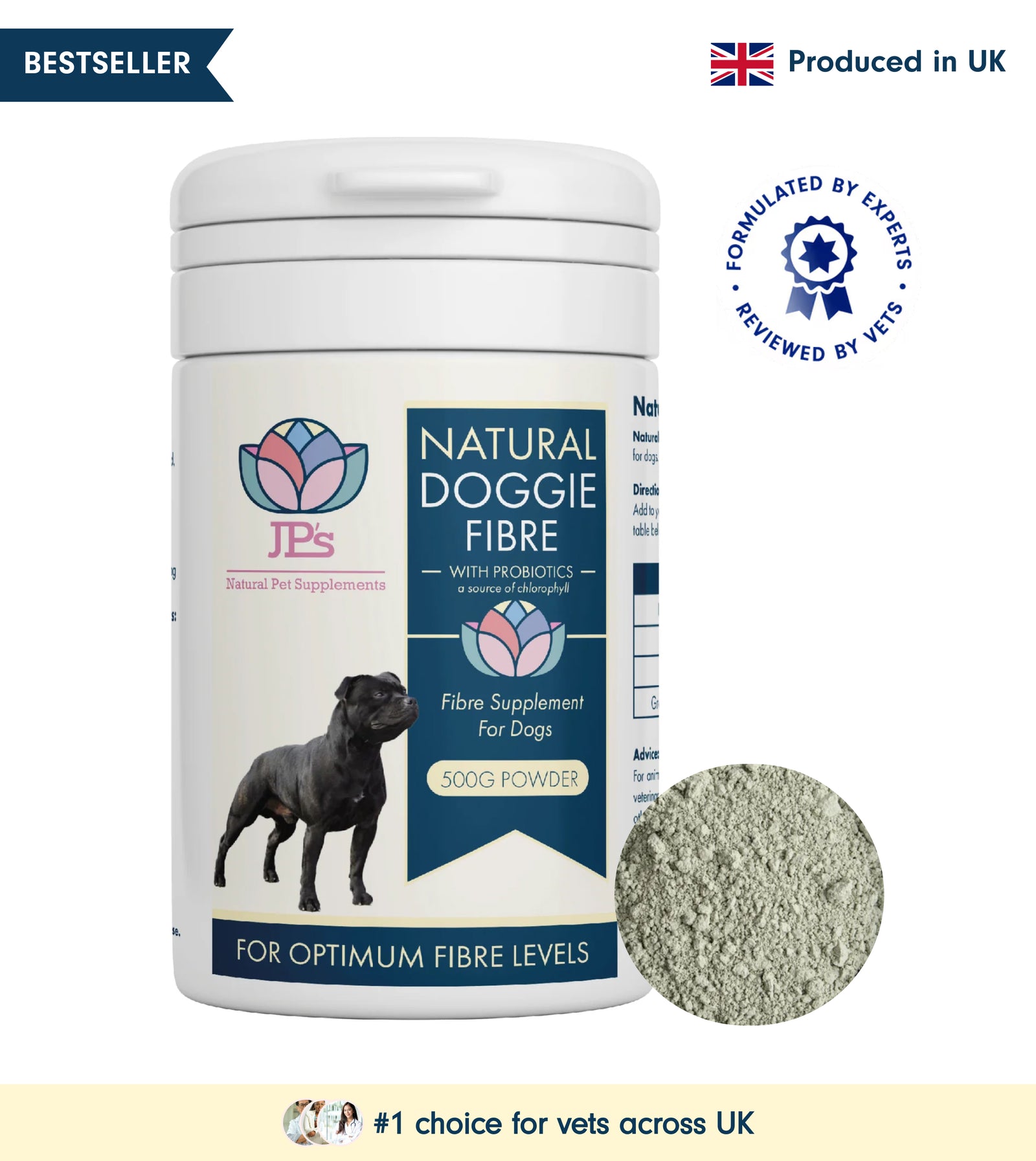

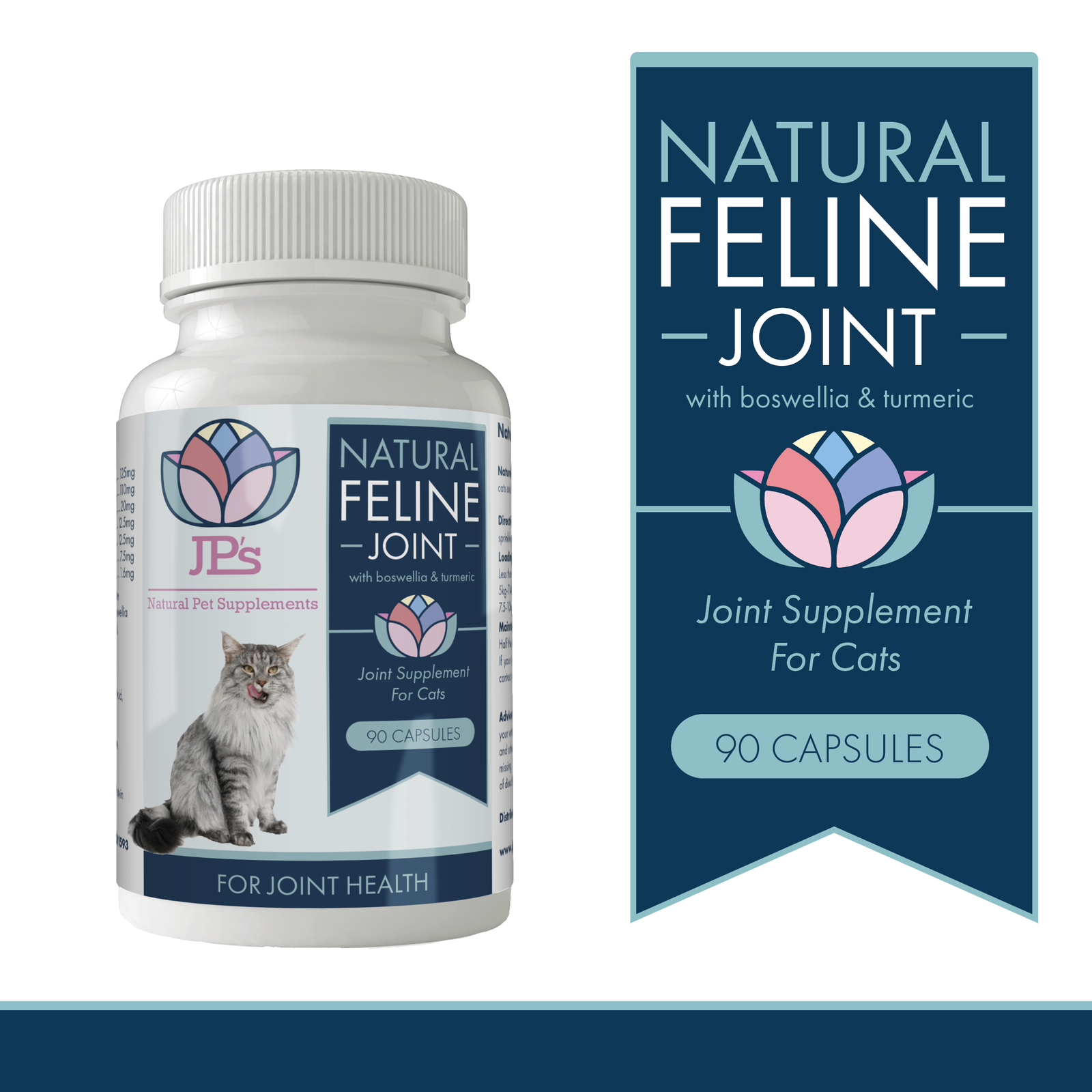
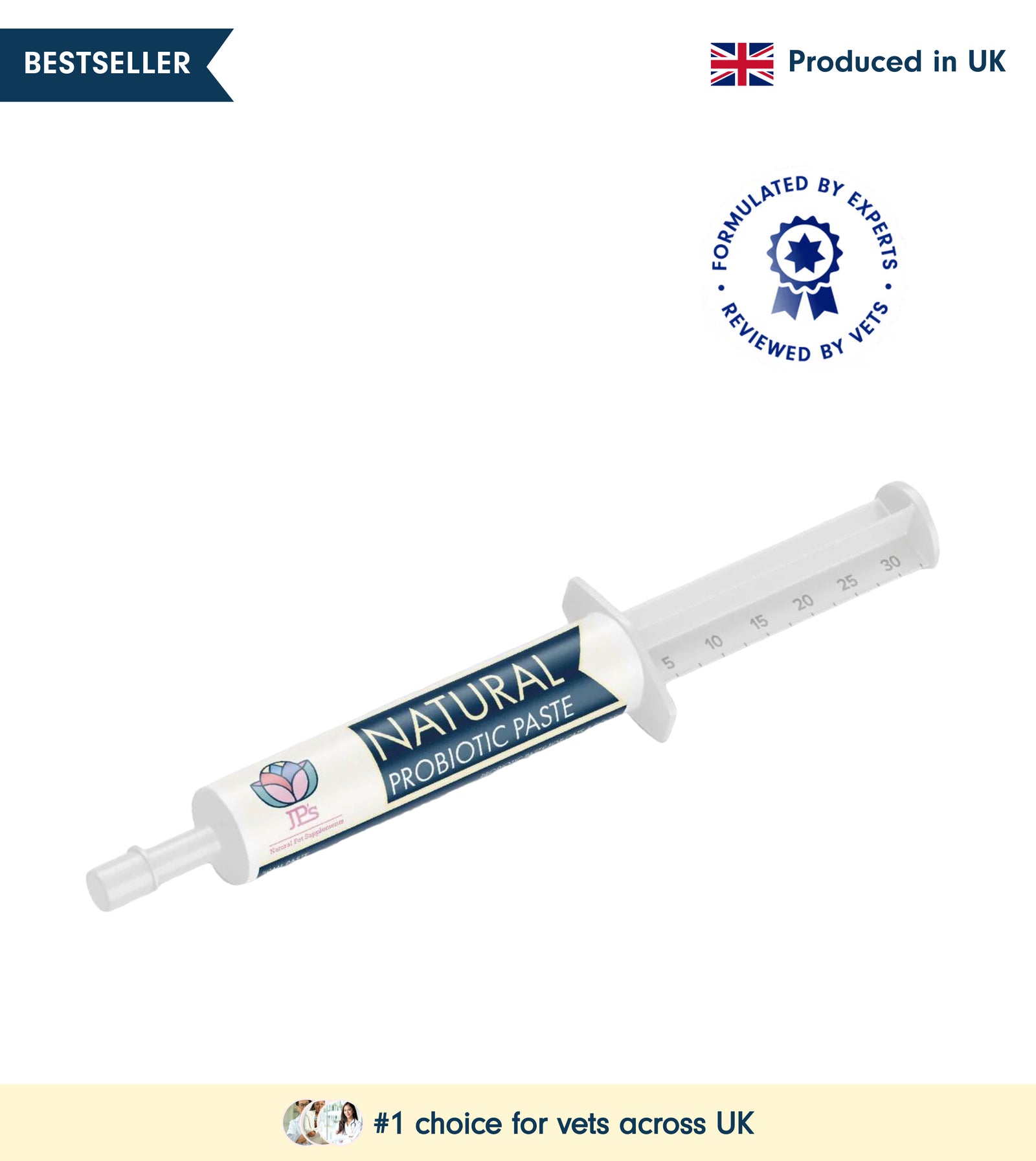
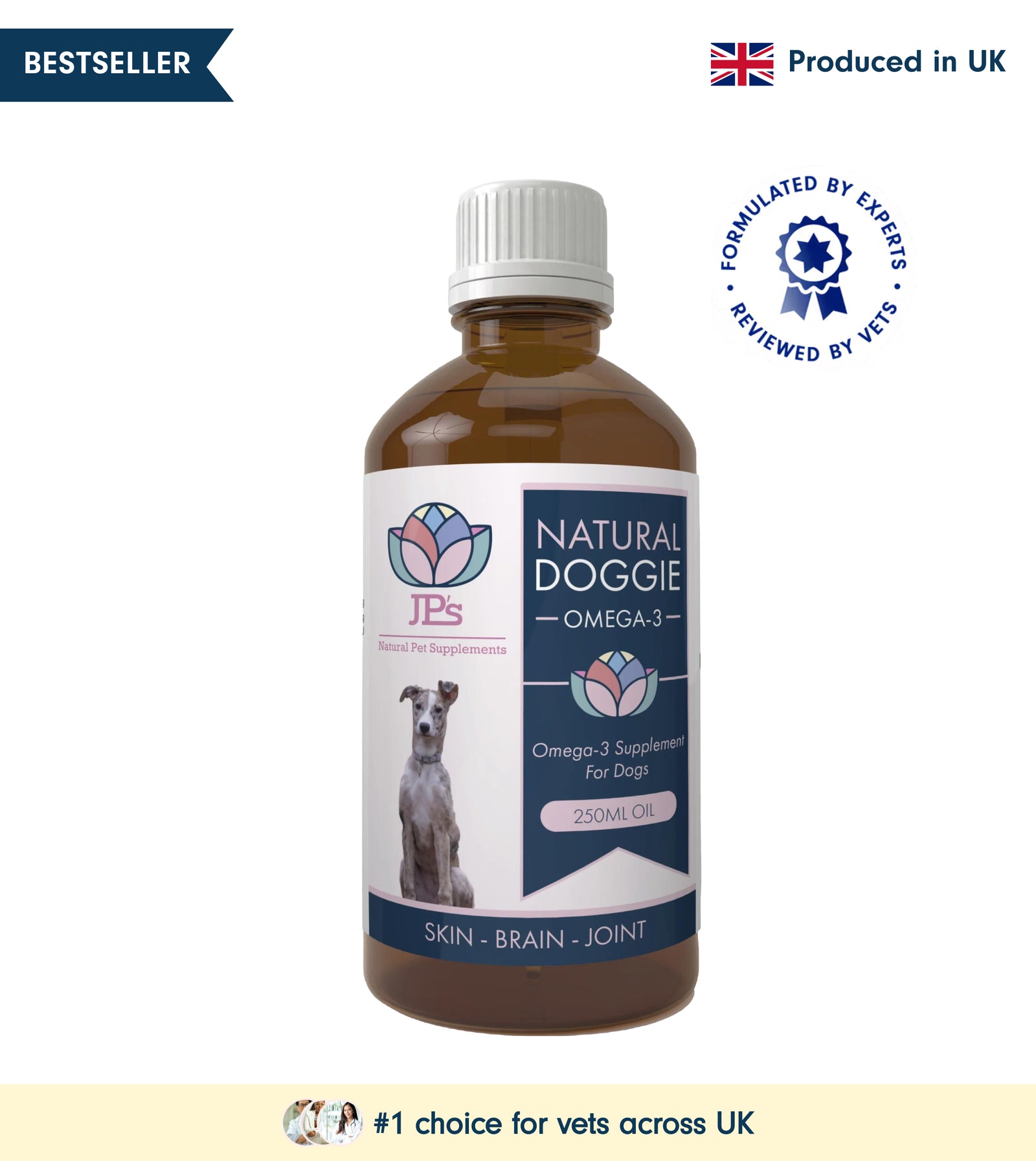
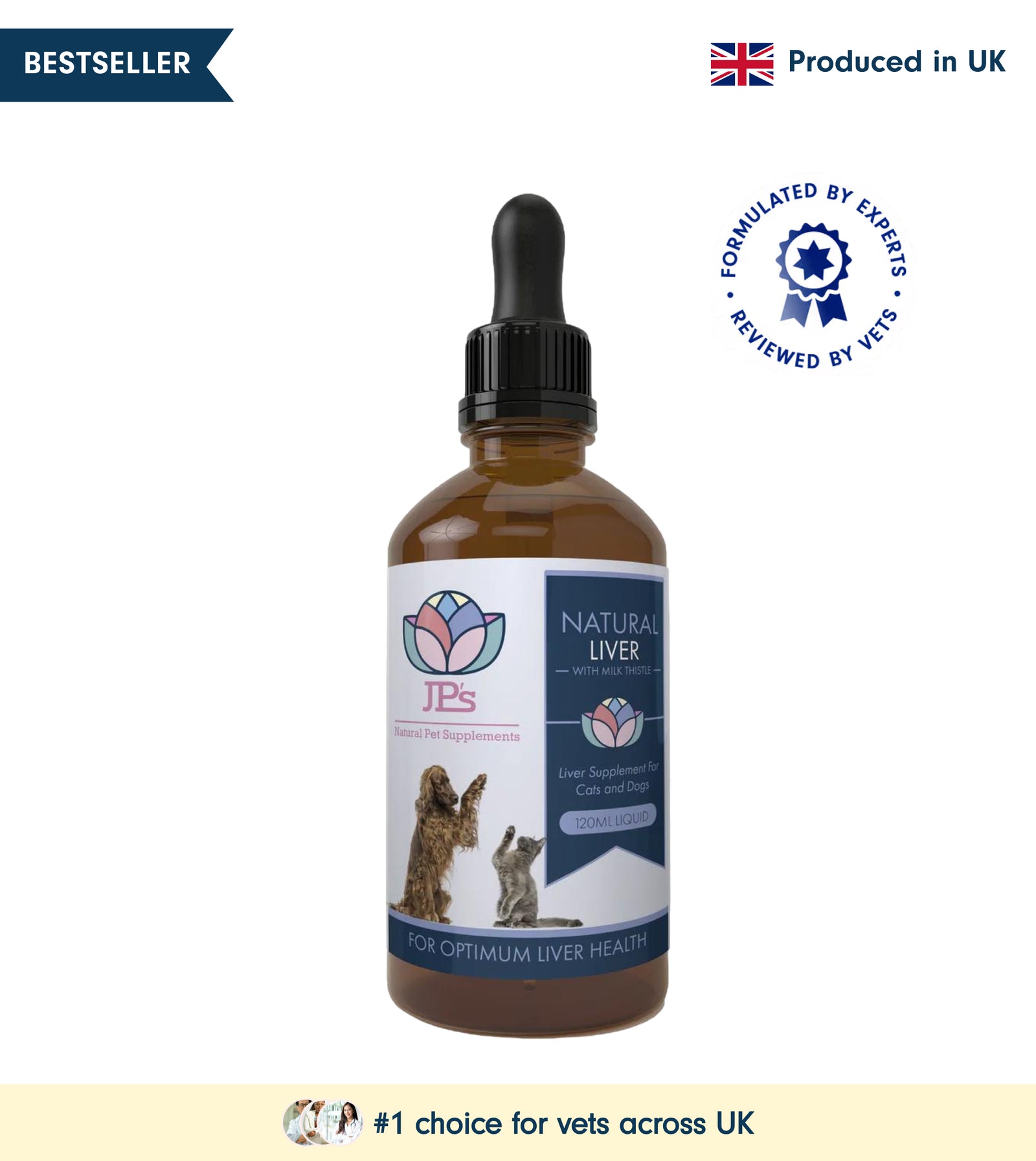










Leave a comment (all fields required)